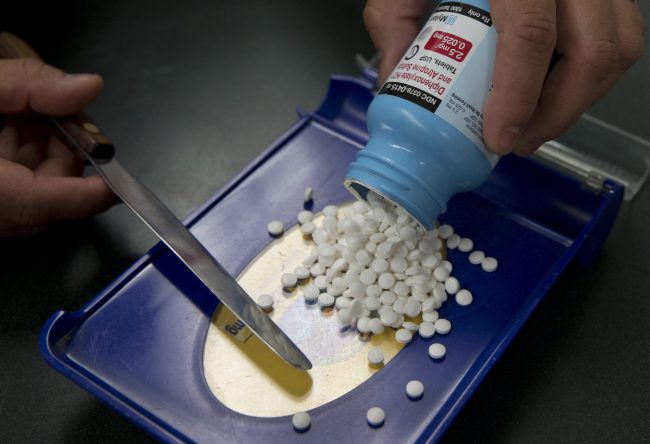Use of Ontario’s public drug program has increased three fold since 2000, which suggests that young Canadians may be struggling to afford prescription medication, a new report by the Canadian Medical Association Journal reveals.

In every Canadian province, there is a public drug program available for those who spend more than a certain percentage of their income on prescription medication.
WATCH: New pharmacy program to prevent medication mistakes

The program is intended to offer low-income Canadians some relief from the cost of their prescription drugs. To be eligible for the program in Ontario, applicants must spend more than 3 per cent to 4 per cent of annual after-tax income on prescription drugs, and be younger than 65.
The report analyzed Ontario’s Trillium Drug Program between 2000 and 2016 and found that use of the program increased by three times over the 16-year period. While the report looks at Ontario only, the study says that because drug prices are national and most provinces have similar public drug programs, the results could likely apply to other regions.
WATCH: Opioid prescriptions in Ontario decreasing, but many patients still consuming above daily dose limits

The study suggests that rising drug prices, coupled with precarious work for young people, may be driving more Canadians to need public assistance to afford their medication.

Get weekly health news
“It seems like people who are getting a little bit younger are needing this program,” said Dr. Mina Tadrous, a researcher with St. Michael’s Hospital. “People in younger age groups are doing precarious work, where they’re on contracts or they’re not getting full insurance coverage,” he said.
Furthermore, increasing drug prices are pushing insurers and employers to enact stricter drug coverage and introduce higher deductibles as they look for ways to control spending.
“The trend is that the price of drugs is going to continue to go up,” Tardous said. He added that newer drugs brought into Canada from other countries are often sold at much higher prices than those that have been on the market for years.
The report refers to expensive new therapies being approved that may make individual prescription fees more costly. Tardous refers to biologic drugs that contain antibodies as one form of these treatments that young people are accessing.
WATCH: Many Canadians not taking life-saving medication due to cost

The research paper states that in 2005, there were 20 drugs on the Canadian market that cost more than $10,000 annually, a number that had risen to 124 by 2015.
In addition, the pharmaceutical price regulating body, Patented Medicine Prices Review Board (PMPRB), uses France, Germany, Italy, Sweden, Switzerland, Britain and the United States as models to set Canadian prices.
These countries have some of the highest drug prices in the world.
“We have drugs coming into the market that cost way more than the drugs that were on the market before,” said Marc-André Gagnon, a pharmaceutical policy expert from Carleton University.
WATCH: Doctors warn of serious complications from too many prescriptions

He calls the influx “a tsunami of high-cost drugs.” Canada has the third-highest prices of prescription drugs in the world, behind only the United States and Germany.
Gagnon explains that the reason newer drugs entering the market are so high is that “we have a completely fragmented system. Each province has their own public plan. The federal government has their own pubic plan. What we need is a drug plan that can better account for the cost of new drugs,” he said.
Both Gagnon and Tardous acknowledge that a national pharmacare program could ease some of the burden on provincial programs. A federal program would likely cover essential medications only, whereas it’s the rising cost of non-essential medication that has Canadians feeling the pinch.








Comments